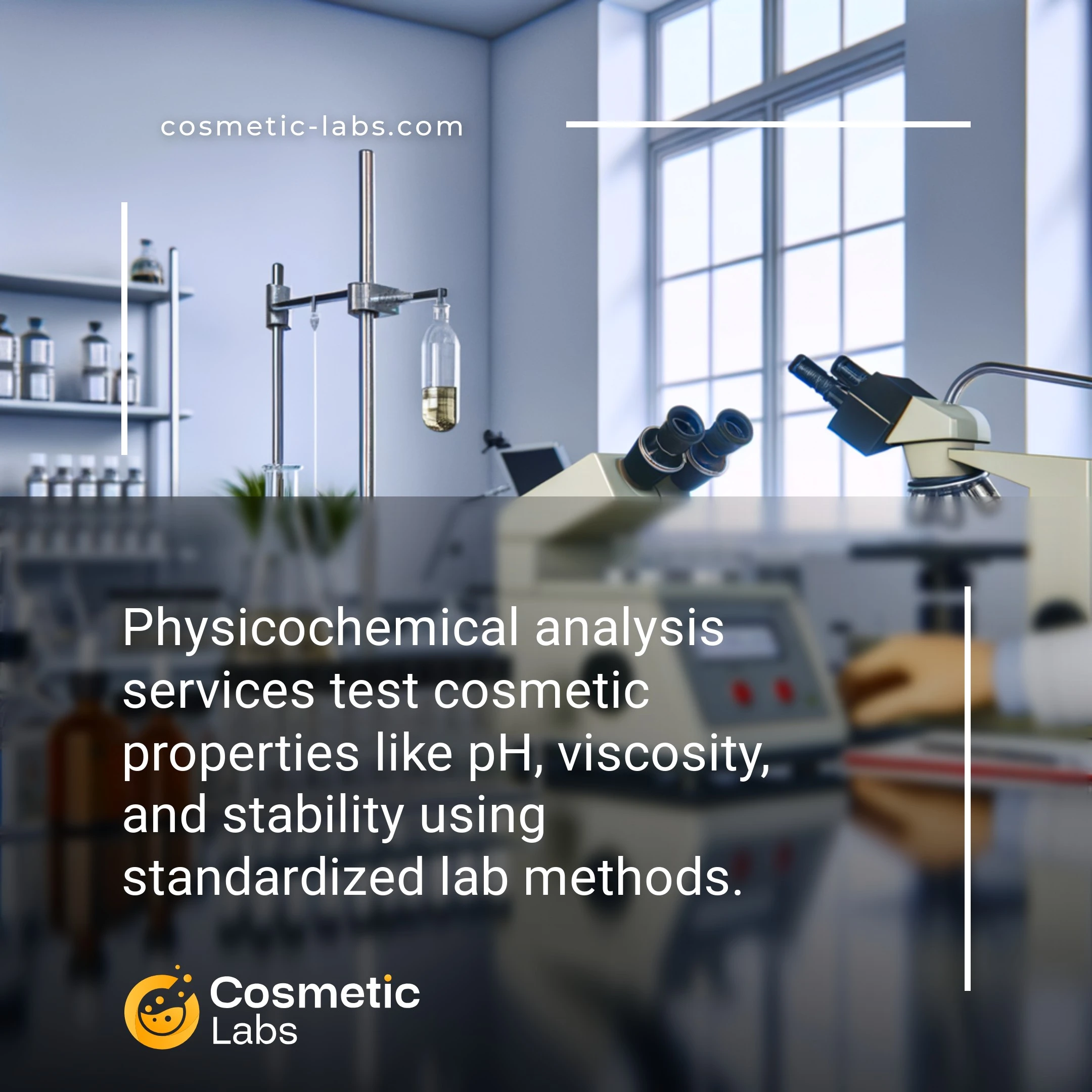Physicochemical Analysis Services for Cosmetic Product Development

What is Physicochemical analysis?
Physicochemical analysis services test your cosmetic formulations’ physical and chemical properties—pH levels, viscosity, density, and stability under different conditions. Partner labs use techniques like rheometry and spectroscopy to verify your product meets safety standards before market launch. These tests catch formulation issues early, saving you from costly recalls and ensuring your products perform consistently from batch to batch.
Why do you need this service?
Cosmetic labs use physicochemical analysis to verify product stability across different temperatures and pH levels before market launch. These tests reveal how your formulation performs under real-world conditions—from hot warehouses to bathroom shelves—helping prevent costly product recalls and customer complaints. Labs also apply these analyses to optimize texture and sensory properties that directly impact consumer satisfaction.
Who provides Physicochemical analysis services?
All cosmetic labs providing Physicochemical analysis services
There is no company providing these services at the moment.
Physicochemical Analysis for Cosmetic Products
Physicochemical testing forms the backbone of cosmetic product development, giving you concrete data about your formulation’s behavior and stability. Labs on our platform run these tests to verify your product meets both regulatory standards and performance expectations before it reaches consumers.
Core Testing Parameters
Partner labs analyze physical and chemical properties that directly impact product quality and shelf life. They measure pH levels to confirm skin compatibility, typically aiming for 4.5-7.0 for facial products. Viscosity testing determines if your cream spreads properly or if your serum flows correctly from the bottle.
Standard physicochemical tests include:
- Density and specific gravity measurements
- Particle size distribution for emulsions
- Color stability under different light conditions
- Odor evaluation at various temperatures
- Rheological behavior analysis
These measurements help predict how your product performs during shipping, storage, and daily use by consumers.
Stability and Compatibility Studies
Labs test your formulation under accelerated aging conditions to predict its two-year shelf life in just 3-6 months. They expose samples to temperature cycles (40°C, room temperature, and 4°C) while monitoring changes in appearance, pH, and viscosity.
Compatibility testing checks how your product interacts with packaging materials. Labs verify that active ingredients don’t leach into plastic containers or react with metal components in pumps and sprayers. This prevents costly recalls and protects your brand reputation.
Most labs provide detailed reports showing test results at 0, 1, 3, and 6-month intervals, giving you data to support product claims and set expiration dates.
Practical Applications of Physicochemical Analysis in Cosmetic Development
Cosmetic labs deploy physicochemical analysis services across product development stages to verify formulation stability, safety profiles, and performance characteristics.
Formula Optimization and Stability Testing
Labs analyze pH levels, viscosity measurements, and particle size distribution to refine product textures and performance. For emulsion-based products like moisturizers, rheological testing determines spreadability and absorption rates. Temperature cycling tests expose formulas to -5°C to 45°C conditions over 3-6 months, revealing separation issues or color shifts.
Accelerated aging protocols compress years of shelf life into weeks. Labs monitor changes in active ingredient concentrations, preservative efficacy, and physical appearance to establish accurate expiration dates and storage recommendations.
Raw Material Characterization and Quality Control
Before incorporating new ingredients, labs perform spectroscopic analysis (FTIR, UV-Vis) to confirm molecular structures and purity levels. Particle size analysis ensures uniform distribution of pigments in color cosmetics, preventing streaking or uneven coverage.
Batch-to-batch consistency testing catches variations that affect final product quality. Labs measure parameters like melting points for waxes, refractive indices for oils, and moisture content for powders to maintain consistent product performance.
| Analysis Type | Application | Typical Timeline | Key Parameters |
|---|---|---|---|
| Stability Testing | Shelf life determination | 3-6 months | pH, viscosity, color, separation |
| Rheological Analysis | Texture optimization | 1-2 weeks | Flow behavior, yield stress, thixotropy |
| Thermal Analysis | Formula compatibility | 3-5 days | Melting point, glass transition, decomposition |
| Spectroscopy | Ingredient verification | 1-3 days | Molecular structure, purity, concentration |
Ready to implement physicochemical testing for your cosmetic products? Connect with specialized labs on our platform to access the analytical services your formulations need.
